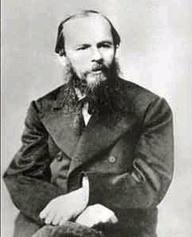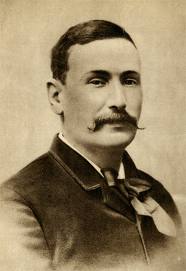Realism and Naturalism literature overview

Realism and Naturalism appear in Europe during the second half of the 19th century. Even though they are quite similar and share some of their main characteristics, there are also several differences: Realism is more descriptive and more oriented towards the bourgeois class, almost limiting its topics to it. However, Naturalism goes beyond the bourgeois class and delves deeper into social criticism and the less favored classes. Also, Naturalism is more pessimistic and thinks human actions are already determined, while Realism tries to maintain an optimistic tone and expresses that humans can act freely.
Naturalism is considered the natural progression from Realism, and in fact many Realism writers evolve towards Naturalism. However, there are a few who instead of expressing the reality of the outside world evolve towards expressing the reality of human emotions, in a new genre called psychological novel (Crime and Punishment, by Dostoievski).
As one of the last literary movements of the 19th century, Realism and Naturalism are studied in schools in Spain as an introduction to what will the be 20th century literature, marked by the Spanish Civil War.
Spanish Realism Literature
The most popular genre in Spain during the second half of the 19th century was the novel, as a consequence of the growth of the bourgeois class that conquered the political powers through successive revolutions (1789, 1820, 1830, 1848). The ideals of the bourgeois class are reflected in the Spanish Realism literature: individualism, materialism, desire for social advancement and appreciation of the day-to-day and the immutable.

The topics used in the Spanish Realism literature revolve mostly around the contrasts between the traditional ideals from the rural areas and the modern and urban ideals of the cities; or the exodus from the country to the city, and the social and moral contrasts this produces, as well as the fight for social ascent and moral and economic success. Another popular topic is the unsatisfactory condition of women, who can vote but don't have access to workplaces or to the independence and individualism of the bourgeois. As an escape from these conditions, serialized novels with love and emotional themes become quite popular among women. As Romanticism, Realism has two tendencies within the movement: conservative and progressive.
The main characteristics of the Spanish Realism literature are:
- Objective views of reality through the study of customs of psychological character. Any subjective element is eliminated, as well as any fantastic event and emotion that derives from reality.
- Defense of a thesis: each narrator write his works from his own moral point of view, even though it may compromise the objectivity of the narrative. This is called omniscient narrator.
- Issues which are close to the reader: like conflicts in marriage, infidelity, defense of one's ideals...
- Use of colloquial language: the language spoken by the characters has to be as similar as possible to the language they might use in real life, so as not to detract from the veracity of the novel.
In Spain, Realism literature caught on very quickly because there was a precedent for it in the picaresque novels and El Quixote. Realism reached its peak in Spain in the second half of the 19th century with Juan Valera and Benito Pérez Galdós, although it never reached the strictness of the Balzac school. Galdós, Clarín and other Realism writers have a clear Naturalist influence, but without the scientific and experimental foundations found in Zola's works. The things they have in common are the need and wish to fight against conservative ideals and its subversive behavior.
Spanish Naturalism Literature

Naturalism is an artistic movement, mostly present in literature, which aims to reproduce reality with a true documental objectivity in all aspects of life, from the most vulgar to the most sublime. It's main developed was Émile Zola, which explains this theory in the prologue of his novel "Thérèse Raquin" and "Le roman expérimental".
Naturalism extended to the rest of Europe from France in the next 20 years after its "invention" by Zola, adapting itself to the different literary movements in each country. Naturalism presents human beings as having no will, in the sense that everything they do is determined by genetics and setting. In most of the works they try to reflect that human condition is basically influenced by three factors: genetic inheritance, social handicaps like alcoholism, prostitution, violence... and the social and material environment in which the subject develops.
The main characteristics of Naturalism are:
- Physiology as the cause to the character's conduct.
- Satire and social criticism: naturalist novels aren't simply a pastime, they're a seriously detailed study of social problems, and it tried to find the causes.
- Understanding of literature as a weapon for political, philosophical and social combat.
- Topics can revolve around social illnesses and other disagreeable aspects of life, so the Naturalist writers can't hesitate when writing about the most crude and unpleasant things of social life.
- Adoption of sex-related topics as the central element in novels as a manifestation of a social illness and vices. This is why so many Naturalist works talk about prostitution as a social evil and individual tragedy.

